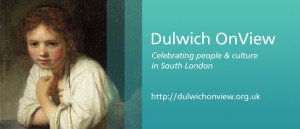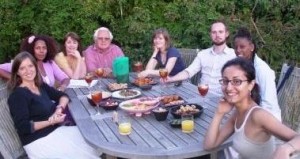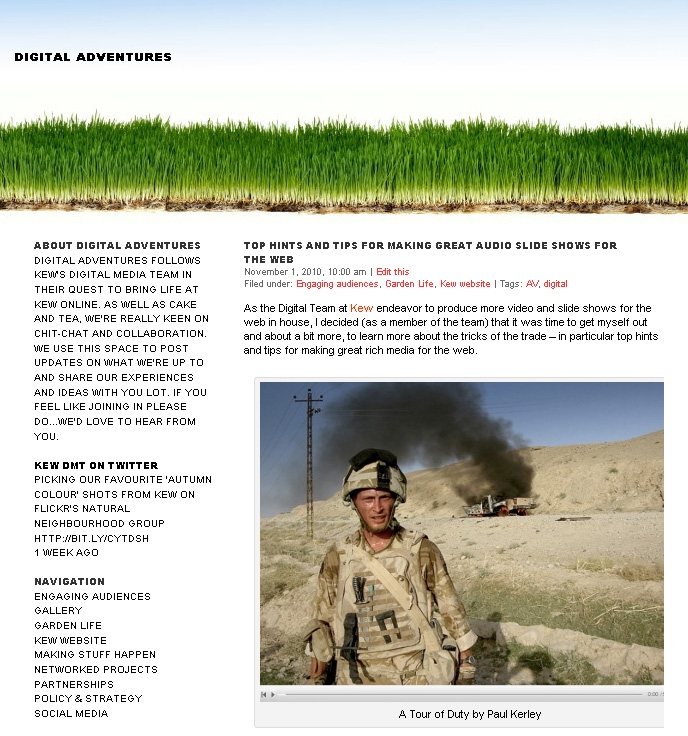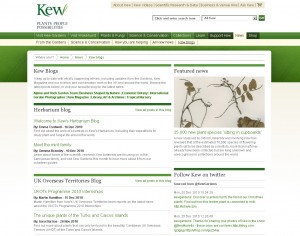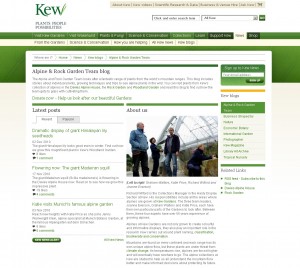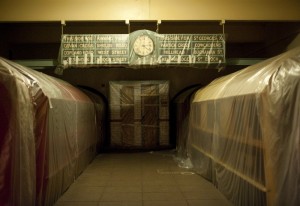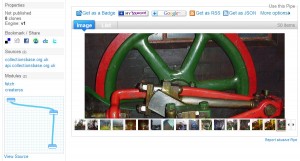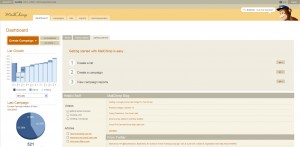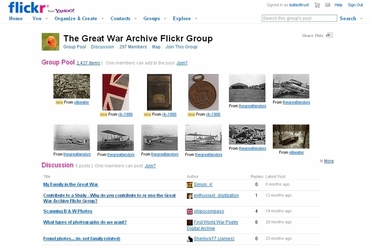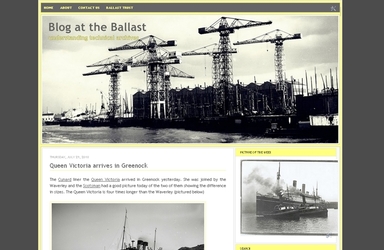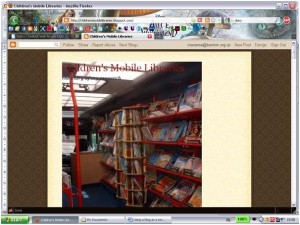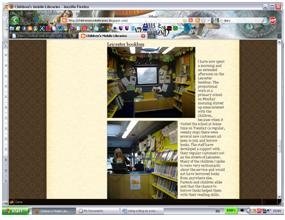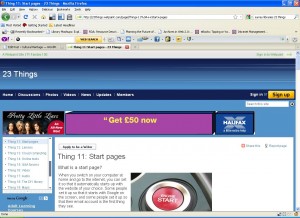About this Guest Post
Stuart Macdonald is the AddressingHistory Project Manager and is based at EDINA & Data Library, University of Edinburgh. He can be contacted at: stuart.macdonald@ed.ac.uk
AddressingHistory: a Web2.0 community engagement tool and API
Background
The AddressingHistory project was funded as part of the Developing Community Content strand of the JISC Digitisation and e-Content Programme and ran from April 2010 until September 2010. Led by EDINA in partnership with the National Library of Scotland (NLS), the aim of the project was to create an online engagement tool built using open standards. Such a tool would enable members of the community, both within and outwith academia (particularly local history groups and genealogists), to enhance and combine data from digitised historical Scottish Post Office Directories (PODs) with contemporaneous large-scale historical maps.
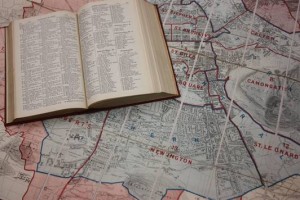
Map and Street Directory
Image courtesy of Addressing History – available under a CCAttribution-NonCommercial-ShareAlike 2.0 Generic through Flickr – http://www.flickr.com/photos/addressinghistory/5169410612/
Post Office Directories, precursors to modern day Yellow Pages, offer a fine-grained spatial and temporal view on important social, economic and demographic circumstances. They emerged during the late seventeenth century to meet the demand for accurate information about trade and industry due to the expansion of commerce during this period. They were published more frequently than the census and generally had information about local facilities, institutions and associations, listings for private residents, traders, trades and professions, sometimes details of important people, and advertisements.
For Scotland there are at least 750 Post Office Directories spanning the period 1770 – 1912. The NLS are in the process of scanning using Optical Character Recognition (OCR) techniques and publishing this historic collection in conjunction with the non-profit Internet Archive.
During the 6 month project period the AddressingHistory ‘crowdsourcing’ tool focussed on three volumes (1784-5; 1865; 1905-6) of the Edinburgh digitised PODs and mapping from the same periods. However the specifications were such as to accommodate the full Scottish collection as and when they become available.
One significant deficiency of this collection, which the AddressingHistory online tool aimed to redress by ‘crowd sourcing’, was that the addresses were not geo-referenced. It was the pre-existence of large scale geo-referenced and contemporaneous maps (as supplied by the National Library of Scotland) against which the historic post office directories were contextualised that thus allowed manual (geo)referencing down to individual house address level to be accomplished. This is achieved by simply moving a pin on the map i.e. the map is the mechanism through which the geo-reference is allocated by the user to a particular POD entry.
To assist the geo-referencing exercise addresses from each of the directories were parsed using Google’s geocoding software in order to assign a geo-reference.
Technical Development
The AddressingHistory tool and Application Programming Interface (API) comprises several software components, each built with resilience and sustainability in mind. Open Source software was chosen in several instances, allowing for great flexibility and a feature-rich application, whilst containing costs.
Development initially began by scoping the application’s requirements, designing a database structure to store the information contained in the Post Office Directories in conjunction with pre-processing and data-loading software.
An API is available, allowing access to the raw data via multiple output formats. It is accessible via a RESTful web service.
The client application was built upon the API, featuring web based mapping. To the OpenLayers mapping, we added a collection of historical maps from NLS, contemporary to the three Post Office Directories of interest. A user registration, facilities to edit the stored data and suggest specific changes were added towards the end of the development, together with various enhancements – including a view to the original scanned directory pages.
User Generated Content
The AddressingHistory project raised a number of issues regarding user generated content (UGC) created by the community such as mediation, validation and cross-checking of UGC.
At present the AddressingHistory team retain the option to check UGC and will do so on a periodic basis. It has also installed a logging facility in order to identify inappropriate behaviour (e.g. spam) or inaccurate UGC.
Social Media
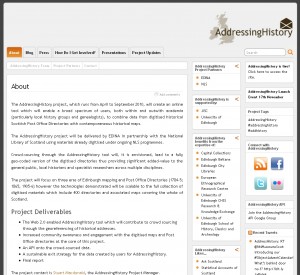
AddressingHistory blog
A key element in determining the success of the project was the establishment of a mechanism whereby the ‘crowd’ could contribute to the creation of a fully geo-coded version of the digitised directories. In part an avenue through which such community engagement could be realised was via communication with Edinburgh Beltane – a national co-ordinating centre for public engagement and the College of Humanities and Social Sciences Knowledge Transfer Office. Social media channels were also deployed to engage the public, to develop links within the community, and to act as a vehicle to expose the tool and API to a wider audience.
At the outset of the project a WordPress blog (http://addressinghistory.blogs.edina.ac.uk/), was deployed as the key space for communicating and engaging with interested members of our target audiences.
Twitter was an unexpectedly useful space for the project with over 160 Tweets posted under the @addresshistory account with many messages receiving ReTweets and a Facebook page was also created for AddressingHistory for sharing short updates, useful links and to encourage viral sharing and recommendation.
As a longer term strategy we intend to maintain where practicable blog activity, Facebook and Twitter presences. A mailing list has been set up to ensure we can remain in contact with those interested in AddressingHistory developments and a Google group has been established aimed at users interested in using the AddressingHistory API for their own websites, projects, or mashups.
Conclusions
AddressingHistory was an ambitious project which combined a range of technologies from data processing and database design, to Web 2.0 and web mapping services. Much was achieved within the relatively short project in terms of public engagement and amplification through social media facilities and channels, and the delivery of a robust and scalable website and API capable of empowering the ‘crowd’ with the facility to search and edit geo-referenced content from the Scottish Post Office Directories and digitised historic maps from the same era.
With more funding, the AddressingHistory website would benefit from more engineering work on the data pre-processing and loading – perhaps making more use of the different sections of the directories together with advertisements etc.
AddressingHistory would also profit from the addition of further content (for other areas of Scotland) to potentially broaden the user community.
Gauging the success of the project however goes beyond the delivery of engaging and innovative online tools. It will be ultimately be measured by continual and extended use within the wider community.
To access the AddressingHistory online tool and API please point your browsers at: http://addressinghistory.edina.ac.uk/

